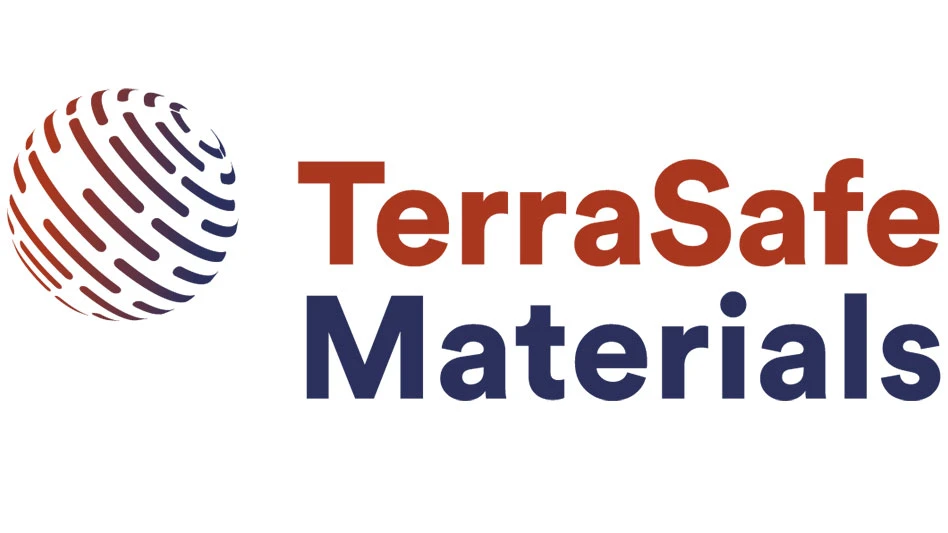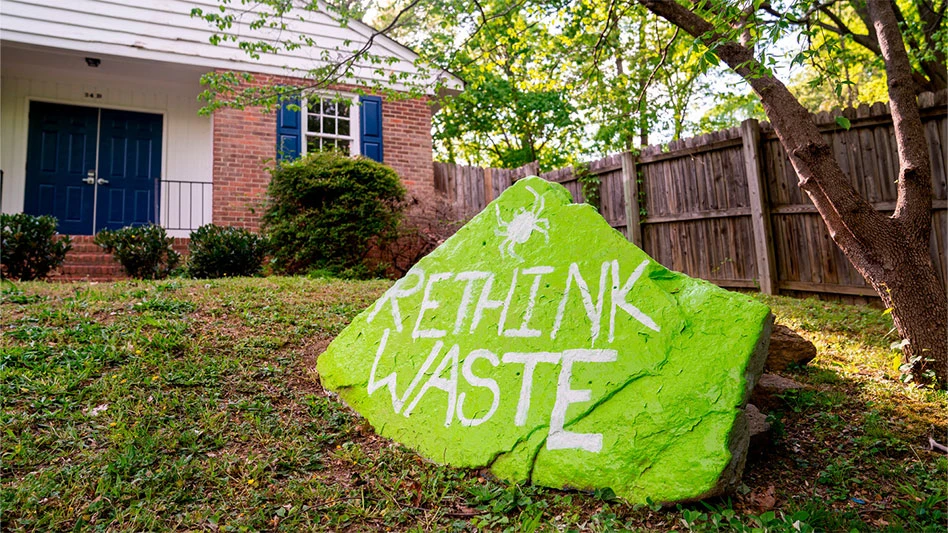Stormwater – the word brings a shudder to most scrap processors who have been trying for several years to comply with regulations regarding runoff. According to the U.S. Environmental Protection Agency, stormwater becomes a pollutant when it carries grease oil, heavy metals, and sediments from commodity storage and scrap processing areas into storm drains that feed rivers and lakes. As such, stormwater runoff is regulated by the EPA.
Scrap processors are required to obtain a stormwater discharge permit from their state agency. If they operate in states that are not included in the National Pollutant Discharge Elimination System (NPDES), a permit must be obtained from EPA if the facility discharges stormwater through a point source into a U.S. body of water.
All states and the EPA require that facilities prepare a detailed operations plan for the recycling facility that includes steps necessary to control stormwater contamination. These steps are referred to as best management practices (BMPs).
REQUIRED BMPs
Two categories of BMPs are required by the Stormwater Discharge Permit. Source Area Control BMPs prevent stormwater from becoming contaminated at a site. If Source Area Control BMPs are not feasible or are clearly insufficient, the Pollution Prevention Plan must prescribe appropriate Stormwater Treatment BMPs to reduce the pollutants in stormwater prior to discharge to state water.
The Stormwater Discharge Permit requires that the following structural Source Area Control BMPs, at a minimum, be considered in all Pollution Prevention Plans: materials/product coverage; diversions which minimize contact of stormwater with storage areas; materials enclosure or containment; and stormwater collection and possible re-use.
Pollution prevention is the primary emphasis of the general Stormwater Discharge Permit. However, some Stormwater Treatment BMPs are required if pollution prevention is not adequate in controlling pollutants. Stormwater Treatment BMPs should be considered in your Pollution Prevention Plan only if needed to reduce pollutants in site discharge. Oil/water separators are typically and most frequently required if significant discharges of stormwater are contaminated with petroleum products.
Also, various traditional stormwater treatment practices are required if source area controls are ineffective or impractical and stormwater is contaminated by significant amounts of sediment from eroding areas, including bare earth industrial lots. These practices utilize filtration or sedimentation, such as filter fences, grassed swales, retention ponds, and vegetated buffers.
Faced with compliance issues related to oily water discharge, the owner must either modify the site operations or select a piece of equipment that controls the stormwater discharge from the site. To control the discharge of oil materials, ask questions such as, "Is an oil/water separator necessary for compliance assurance?" "Can an area storing oily material be covered?" "Can a dry process replace a wet process?"
When an oil/water separator is in place, care must be taken to assure that both unauthorized discharges of industrial pollutants are prohibited and oil/water operations and maintenance functions as the manufacturer recommends. If not, either action has the potential of creating serious liability.
NEXT STEPS
Oil can exist in water in several forms, including free oil, mechanical dispersions, chemically stabilized emulsions, dissolved oil, and oil that adheres to the surface of particulate materials.
Once you know how the oil in water may exist on your facility, the next step is to understand how much oil exists. A primary concern faced by scrap processors and recyclers is how much oil might be contained in stormwater which is discharged or treated before discharge. The design procedure for selecting an oil/water separator for an application begins with an accurate indication of the oil concentration.
To illustrate the conditions of the selection process, consider typical regulatory values of 5 or 10 milligrams per liter of oil in the water stream. To convert these values to generally understood volumes, consider that 10 mg/L is the equivalent of 3 quarts of oil in a volume equivalent to a 50 gallons per minute stream that has been pumping for 24 hours.
EPA uses one of two methods for analyzing the total recoverable oil and grease in water. The gravimetric procedure (Method 413.1) uses Freon to dissolve the oils. The disadvantage of this method is that all Freon extractable compounds are included in the concentration; some of which may dissolve in water and cannot be separated by mechanical means in an oil/water separator. The regulatory discharge limit typically applies to only toxic chemicals like petroleum hydrocarbons; therefore, the analysis of the oil may indicate higher concentrations.
The second analysis method is EPA Method 413.2. This procedure for oil isolation is the same as Method 413.1; however, the added step of infrared spectrophotometer scan establishes background levels for oil and grease. EPA studies indicate as much as 12 percent higher levels of oil and grease have been found when compared to Method 413.1.
Once you know what kind and how much oil contamination may be expected, the appropriate equipment must be selected.
WHAT KIND OF SEPARATOR?
Oil/water separators are devices used to remove small amounts of oil and other petroleum products from industrial wastewater and/or stormwater systems. Oil/water separators use several techniques, depending on the type and application or intended use of the separation system. The refining industry typically uses a gravity separation system. The performance of this system is based primarily on the relatively low solubility of petroleum products in water and the difference between the specific gravity of water and the specific gravity of petroleum compounds.
A gravity oil/water separator is not designed to separate other products such as solvents, detergents, or metals. This leads to a common misconception. Scrap handling and vehicle maintenance personnel and others sometimes perceive a stormwater or wastewater drain connected to an oil/water separator as a catch-all for wastes generated from routine maintenance activities. This false sense of security can result in illegal discharges of hazardous substances. Even when not illegal, misuse of these systems can upset treatment plants, cause discharge permit violations, increase sludge disposal costs, and/or eliminate beneficial reuse of wastewater or sludge.
The American Petroleum Industry (API) has specified design criteria for simple gravity separators based on the removal of free globules larger than 0.015 centimeters (150 microns) in diameter. The effectiveness of gravity separation depends on proper hydraulic design and the period of wastewater detention for a given rise velocity. Longer retention times generally increase separation efficiency; detention must be sufficient to permit oil droplets rising at a given velocity to come to the fluid boundary where they can be removed by skimming. The gravity separator is ideal if the oil is sludgy and the waste stream contains a large concentration of solids that will settle.
Gravity-type oil/water separators often do not remove enough oil to meet regulatory requirements. In these cases, coalescing oil/water separators are used to enhance separation. According to Stoke’s Law, a 100-micron diameter oil droplet will rise about 6 inches in water in 10 minutes. A 20-micron diameter oil droplet will take over two hours to rise the same distance. Binding together the smaller oil droplets makes them larger and more buoyant, causing them to rise faster. Many coalescing oil/water separators use inclined plates to reduce the distance the oil droplets must rise to be removed from the flow, increasing the separation efficiency of a typical gravity separator.
In a typical gravity type oil/water separator, an oil droplet must rise approximately 48 inches to reach the surface of the water and be removed from the flow. Addition of inclined coalescing plates will allow the droplet to separate after rising only 1/4 inch before hitting the upper plate and being removed from the water flow.
As the oil droplets slide upward along the coalescing plates, they combine with each other to form larger and larger droplets. By the time they reach the top of the inclined plate, they are large enough to rise to the surface quickly.
Another coalescing feature uses a filter of fine oleophillic (oil loving) fibers such as polypropylene. The fine oil droplets attach to the fibers and are removed from the flow. As the droplets get larger, they become buoyant enough to detach from the fibers and rise to the surface.
The coalescing oil/water separator is best suited for fluid petroleum hydrocarbons and suspended solids concentration less than 300 mg/L. Most coalescing oil/water separators can remove 20-micron and larger oil droplets. The design of the coalescing media and the separator varies depending on the character of the wastewater. Dirt, metal fines, and certain plastics cause the principal problems with coalescing oil/water separators.
The effect of dirt and solids in the stormwater can be minimized by proper selection of coalescing medium and an integral sludge chamber under the coalescing medium to isolate the settled solids from the flow. It is very important that the separator be cleaned of sludge, without accumulating in the coalescing medium.
There are also microbial systems for removing oil from water. In the past, these were most effective when used in applications where the type of oil was predictable. More recent products contain up to 12 different types of microbes, and can handle a mixture of different types of oils. These are often used in time-release tablet form with oil/water separators and can eliminate the need for a skimmer.
EMULSIFIED OIL
Oil/water emulsions that cannot be separated by gravity or with coalescing media are the major cause of high oil concentrations in the stormwater effluent. Emulsions can be formed by centrifugal pumping, large quantities of solids and emulsifying chemicals, or similar causes. Emulsions are reduced by changing the pH, adding heat, or by de-emulsifying chemicals. Chemical methods are in widest use. The electrical process is directed toward emulsions containing mainly oil with small quantities of water. Physical emulsion breaking methods include heating, high-speed centrifugation, and precoat filtration.
Chemical treatment of an emulsion destabilizes the dispersed oil droplets or chemically binds or destroys any emulsifying agents present. Chemical demulsification includes acidification, coagulation, salting out, and demulgation with organic cleaving agents.
OIL/WATER SEPARATOR DESIGN
When a separator is deemed necessary, several design and siting approaches should be considered. For one, aboveground separators are relatively simple and inexpensive. Their better accessibility facilitates easier maintenance and leak detection. The functional design is similar to an underground gravity separator, consisting of a solids settling chamber, oil separation chamber with coalescing baffles, tube or other devices that assist separation of smaller oil droplets.
Also, the typical underground gravity separator contains the solid separation chamber and oil separation chamber with baffles. These are adequate for capturing incidental oil or fuel releases, which is the intended function.
But there are several drawbacks unique to aboveground and underground separators. The wastewater must be pumped into the above- ground separator. The increased turbulence caused by pumping hinders the oil separation process in a simple gravity-type separator system. Also, aboveground separators are not very suitable for cold climates. They may be unsightly, depending on the location. In-ground or underground gravity separators are more expensive to install. They also are not as easy to monitor and may be regulated as underground storage tanks, depending on state interpretation of the Resource Conservation and Recovery Act.
OIL/WATER SEPARATOR OPERATION
The following factors have a direct impact on the efficiency, use, and management of oil/water separators: frequency and intensity; design capacity; emulsifying agents; periodic maintenance practices; type of oil/water separator system; and contaminants contained in the wastewater stream.
Frequency and intensity - The longer the residence time of the wastestream in the oil/water separator, the more efficient it will be at separating oil. Contaminated water enters the separator’s receiving chamber where the wastewater flow rate is reduced, allowing heavy solids to settle while larger oil droplets float to the top of the compartment. Further separation continues in a separation chamber where smaller droplets of oil separate from the water and join the larger droplets previously separated. The oil layer, which has accumulated on the top of the water, spills over an oil skimmer into a holding area; the wastewater then flows, or is pumped, to the stormwater or sanitary sewer system. A longer separation time increases the efficiency of the oil/water separator by allowing a greater amount of oil to rise to the top of the wastewater. Decreasing the wastewater flow rate through the separator, increases its efficiency.
Design capacity - An oil/water separator has a finite capacity for storing oils and sludges accumulated during its operation. Quite often the oil/water separator holding compartments can become saturated or full, allowing contamination to flow freely into the wastewater effluent. Ensuring the separator capacity meets the needs of the process will prevent this.
Emulsifying agents - Detergents and soaps designed to remove oily grime from vehicle and equipment maintenance vehicles, or other components, can adversely affect oil/water separator operation. These agents are designed to increase solvency of oily grime in water. As a result, the oil droplets take longer to separate from water. Overzealous use of detergents can degrade efficiency by completely emulsifying oil in the wastewater stream, allowing it to pass through the oil/water separator unaffected.
Periodic maintenance practices - Sludges and oils, if not periodically pumped from separator holding tanks, can render the separator inoperative. Additionally, leaks from oil/water separators can result in environmental pollution, which may require investigative studies and extensive cleanup. A periodic maintenance plan is key.
Type of oil/water separator system - An oil/water separator designed and installed to a regulatory requirement may not be suitable for present maintenance operations. These units are susceptible to unnoticed abuse by maintenance activities. An oil/water separator designed to capture contaminants from a turnings storage pad will not handle larger wastewater volumes from wet shredders. Also, process area changes can result in changes in the effluent characteristics of the wastewater being discharged to a separator (i.e., wastewater with solvents versus engine or transmission oil). Conversions can necessitate modification of stormwater/wastewater drainage systems. Oil/water separators without a stormwater diversion system that allows stormwater to be diverted from the separation system can also impair efficiency.
The author is department head-engineering for Versar Inc., Lombard, Ill.

Explore the July 1997 Issue
Check out more from this issue and find your next story to read.
Latest from Recycling Today
- Cirba Solutions announces new human resources executive
- Cascades to close packaging site in Niagara Falls, New York
- The Glass Recycling Foundation awards $137K in grants
- Goodwill Industries of Ontario Great Lakes and Rotogran International announce collaboration
- Textile Recycling Expo USA launches in Charlotte, North Carolina
- SSAB trials using crumb rubber from scrap tires in steelmaking
- EGA Spectro Alloys begins aluminum billet production
- Tariff on copper could be looming






